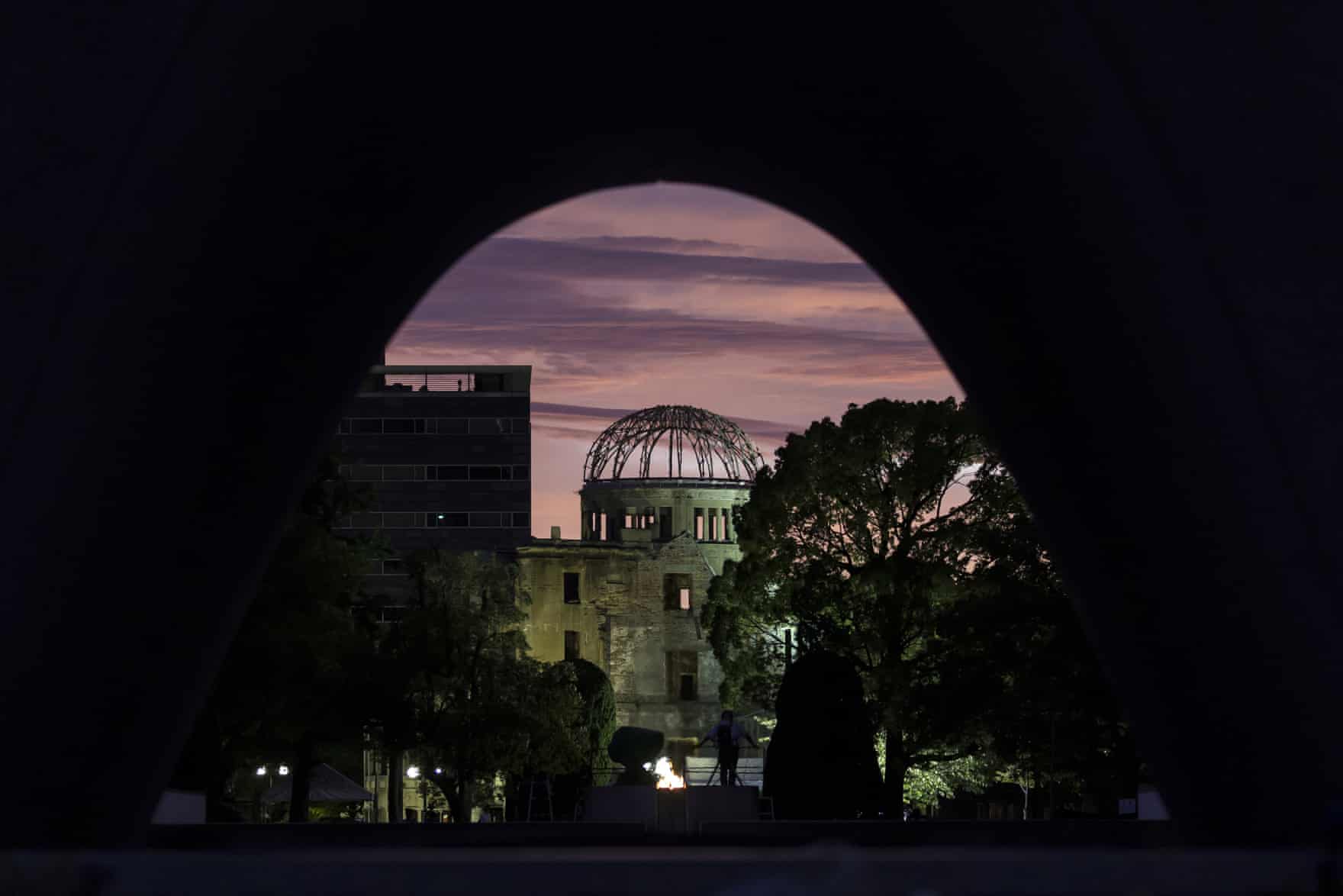Hibakujumoku: Hiroshima's trees of hope

One of the trees which survived the atomic bomb
‘Eucalypt at the site of Hiroshima Castle, 740 m from hypocenter. The tree survived the atomic bombing, while the castle was destroyed.’-
Caption and Photo:Wikipedia
75 years ago the US dropped an atomic bomb, nicknamed Little Boy, on Hiroshima, killing 140,000 of its 350,000 citizens. Three days later, a second bomb, Fat Man, was dropped on Nagasaki, killing 74,000 people.

Sunrise at the Atomic Bomb Dome in Hiroshima Peace Memorial Park, 6 August 2019. Photo: The Guardian
The trees that survived the bombing of Hiroshima

Photo:Green Legacy Hiroshima
How a message of hope and peace is being spread by trees that everybody believed were dead, but survived and became beacons of hope.
After the atomic bombing of Hiroshima on 6th August 1945 it was thought that nothing would grow in the city for 75 years. However, the following spring new seedlings were seen springing up amongst the debris of the city. They provided a powerful message to the survivors and gave them hope that they could rebuild their city.
Today Hiroshima is a green and vibrant city. Many of the trees that were planted in the city after the war were gifts from overseas donors and donors from other parts of Japan.
Hibakujumoku
However, 170 of the trees that we can enjoy in the city today had actually been in Hiroshima before the bomb was dropped and survived the bombing and the devastation that followed. After the war, many of those trees were replanted or preserved in 55 locations within a 2km radius of the hypocenter. Today, they are officially registered as A-bombed trees. Each A-bombed tree is called a hibakujumoku and is identified by a name plate.-ANT- Hiroshima News
Green Legacy Hiroshima (GLH) Initiative
The GLH Initiative is a global volunteer campaign, aiming to disseminate the universal message of trees that survived the atomic bombing of Hiroshima. Created in 2011 by two friends, Nassrine Azimi and Tomoko Watanabe, GLH shares worldwide the double message of caution and hope that the unique survivor trees of Hiroshima (and ultimately Nagasaki) represent, recalling on the one hand the dangers of arms of mass destruction and nuclear weapons in particular, and on the other hand the sacred character of mankind and the resilience of nature. Currently seeds and saplings from the A-bombed trees are growing in more than 30 countries - in a sustained, long-term (1000-year) campaign, joining other efforts for a nuclear-free and more ecological planet.
Learn more about GLH Initiative
Introduction video Green Legacy Hiroshima
The trees that survived the bombing of Hiroshima: A Video on the Trees of Hope in Hiroshima
Read more about Trees, Mother Nature and Hope

Photo: pinterest
Celebrating the tree of life that has shaped human history and civilisation
The Inspiring Story of a Giant Sequoia (Mammoth Tree) of California
The future that awaits the human venture: A Story from a Wise and Loving Teacher
World in Chaos: The Healing Power of Gardens
The healing power of ‘Dawn’ at this time of coronavirus crisis
On the 250th Birthday of William Wordsworth Let Nature be our Wisest Teacher
A Sure Path to build a Better World: How nature helps us feel good and do good
Happy International Day of Forests 21 March 2018
Neoliberalism and the death of Nature in Sheffield and the world over
In Search of Well-being, Joy and Happiness: ‘Nature and ‘Forest Bathing’ is the Path
